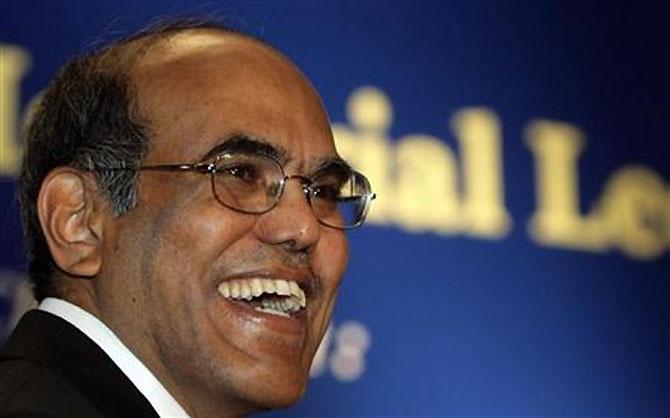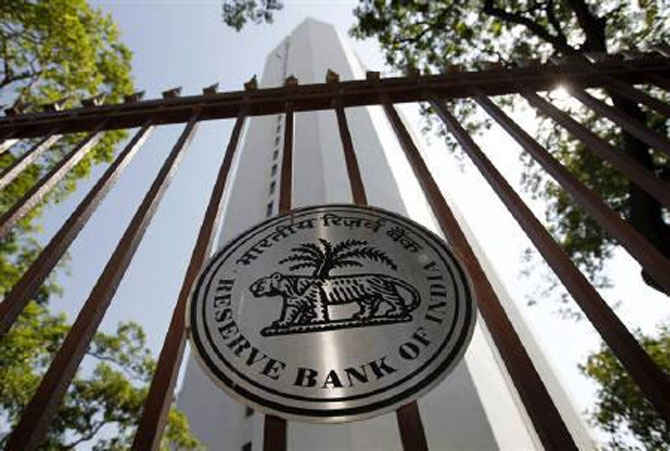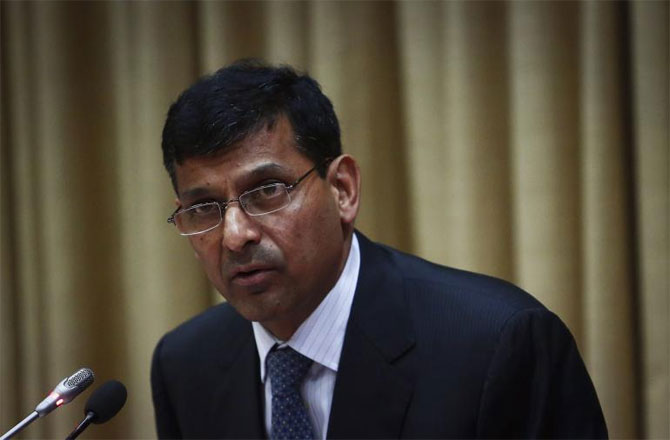 | « Back to article | Print this article |
Duvvuri Subbarao: Green horn that locked horns
"May you live in interesting times. I can hardly complain on that count. I had come into the Reserve Bank five years ago as the 'Great Recession' was setting in, and I am finishing now as the 'Great Exit' is taking shape, with not a week of respite from the crisis over the five years."
- Duvvuri Subbarao on his term as the Governor of RBI
He began his tenure on September 5th, 2008 as the 22nd Governor of the Reserve Bank of India (RBI). Within days, the roller coaster ride began. Global financial crisis set in and the newly appointed RBI governor, Duvvuri Subbarao, geared up for toughest of the times RBI had seen.
India had limited exposure to international markets in the year 2008. As a result of which impact of global financial crisis was not as severe. However, a comfortable rupee position and foreign exchange liquidity had to be maintained along with economic growth.
Under his leadership, RBI kept the domestic markets, to a large extent, alienated from the international meltdown to avoid liquidity or solvency cascades.
Apart from conventional steps for liquidity infusion such as reduction in rates, he took unconventional steps such as rupee-dollar swap facility for Indian banks, refinancing window for Non-Banking Financial Companies and facilitating refinancing of the credit to small industries.
Through these measures, liquidity to the tune of $75 billion or approximately 7 percent of GDP of the country was induced in the economy post November 2008.
Click on NEXT for more...
Duvvuri Subbarao: Green horn that locked horns
Everyone agreed that the country had fared relatively better during the global financial meltdown. Subbarao's original term of three years was extended for another two years by Government of India in September 2011.
Most bankers and economists supported the move as any change in apex bank’s policies may not have been the best for the economy at that point of time.
The year 2012 brought more challenges for the Governor. Increased liquidity in the economy had led to a period of high inflation starting from 2009-10 that eventually became a hot potato.
In February 2012, RBI decided to increase the bank rate from 6 per cent to 9.5 per cent for the first time in nine years (there had been no change in the bank rate since April 2003) calling it a technical adjustment.
The bank rate was decreased to 9 per cent in April 2012 to support the growth push that the economy needed. But seeing the ineffective efforts of government to rein in the deficit and high inflation, Subbarao decided to hold the bank rate unchanged from then on despite pressure from the Center to lower it further.
He had to make a tough choice between reining inflation and supporting growth through fiscal policies that the government had in mind. For lack of belief in the government’s plans, Subbarao took a stand in favor of the common man and refused to further cut the rates much to the disappointment of Mr Chidambaram who publicly expressed his anguish over it.
Click on NEXT for more...
Duvvuri Subbarao: Green horn that locked horns
Listed among ‘India’s 50 Most Powerful People 2009’ by Bloomberg Businessweek, Subbarao stood against the wide calls to cut interest rates by the industry and the government.
He stuck to his belief that inflation hurts the common man and hence curbing it was more important even if it meant sacrificing part of the growth.
Subbarao made efforts to make RBI a body that was ‘communicative, honest, open minded and accountable’ rather a black box which was a mystery for people. He had the opinion that people should know what RBI does. He aimed to demystify RBI and make it a role model for central banks globally.
In this direction, RBI designed financial literacy programs and pushed the states to introduce financial education curriculum at school and college levels to help enable the people to demand services from banking system.
Click on NEXT for more...
Duvvuri Subbarao: Green horn that locked horns
In similar direction, he pressed on IT enabled banking, promoting financial awareness, and starting financial inclusion drives. In February 2013, in its new guidelines for banking licenses, RBI mandated that the aspirants, in their business plan, include ways to achieve financial inclusion.
He was criticized for not maintaining high forex reserves when rupee was appreciating during 2009-10. Also, his tenure was worded as the worst by a RBI governor by Arvind Panagariya, Professor of Economics at Columbia University.
During the last few months of his tenure, he was blamed for falling rupee. Despite all criticisms he stuck to his guns and defended his decisions. While the government blamed RBI’s tight monetary policy and non-cooperative policy behavior for deteriorating economic situation, RBI governor convincingly reallocated the blame to loose fiscal policies of the government and policy paralysis.
A Green Horn five years back, he retired locking horns with the bosses. On September 4th, 2013, as he handed over charge to Raghuram Govinda Rajan as the 23rd Governor of the RBI, he may not have been the favorite of the finance minister of India, Mr Palaniappan Chidambaram, but had certainly raised RBI's stature as an autonomous body. He charted an independent path from the government and refused to succumb to the pressure from the centre.



